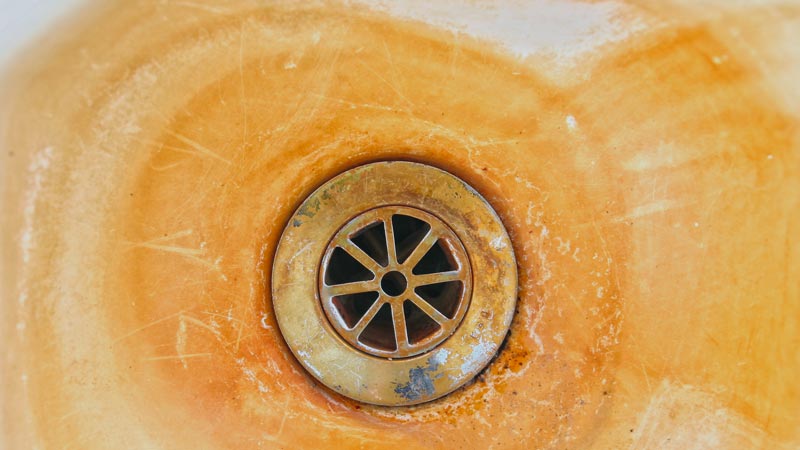
Each water system is unique and has different needs. Please contact our office at 603-868-3212 with specific questions about your water delivery and filtration system.
In the soils of New Hampshire and Maine, it is extremely common to find minerals that contain iron. Iron is the fourth most common element in the Earth’s crust , accounting for over 5% of its total mass. It makes sense that iron is present in many aquifers and explains why a lot of homeowners are seeing the negative effects of iron being present in their water. From unsightly orange staining to low water pressure, iron can be a real problem. Luckily, we have tried and true solutions to remedy your iron water problems.
This article goes over:
- Why iron is a problem
- The two common forms of iron
- Solutions for iron
- 6 benefits of treating iron
The problem
The minerals associated with iron are not considered toxic. It’s regulated under the National Secondary Drinking Water Regulation which is a guideline for dealing with contaminants that may cause cosmetic effects (such as skin, hair, or tooth discoloration), or aesthetic effects (such as taste, odor, and color). The recommended limit for iron is 0.3 mg/l because at 0.3 you’ll start to see the cosmetic aesthetic effects of iron.
Here are a few of the problems that iron water in your home can cause:
- Low water pressure due to iron build up in piping
- Brittleness and orange discoloration of the hair
- Orange staining in sinks, bathtubs and toilets
- Discoloration of laundry
- Decreased functionality of appliances and water fixtures
- Metallic taste
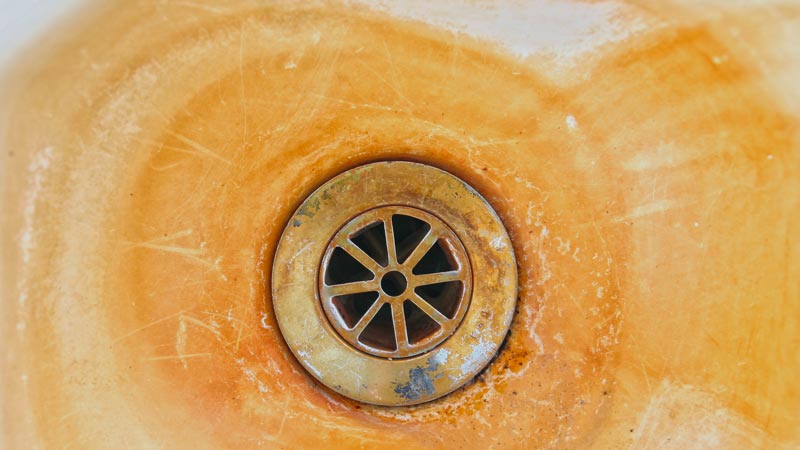
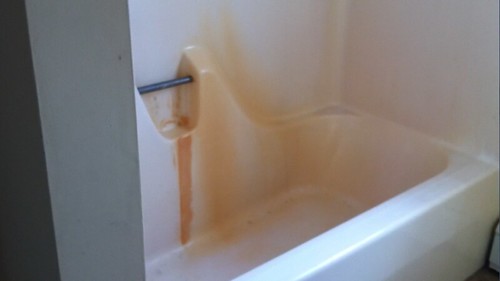

What are the two most common forms of iron found in well water?
We have been treating iron water in New Hampshire & Maine for over 43 years and we see homes that have a small amount of iron present in their water and we see homes that have so much iron that it looks like tomato soup coming out of their well. And the funny part is that these two situations can occur in the same neighborhood. It all depends on where your well is located in the aquifer.
When considering forms of treatment we want to know what form of iron we are dealing with. We want to know this because certain treatment methods work more effectively with specific forms of iron.
Ferrous iron- Even water that runs clear out of your faucet can have iron present, in the form of Ferrous iron. It is invisible to the naked eye until it becomes oxidized by the air, or another form of oxidizer like a cleaning product. This is why you may not see an orange tinge in your running water but after you use the sink, toilet, or tub, the water that’s left behind and sticking to the tubs service through adhesion will eventually evaporate and leave behind the iron minerals which will turn orange through oxidation when exposed to the air. These left over oxidized minerals are what cause the orange staining in/on your fixtures.
Ferric iron- is oxidized iron, and as a result insoluble, meaning that it cannot be dissolved again. When we usually think of iron minerals in water we think of ferric iron. The water containing ferric iron is generally orange in color and you may be able to see actual iron chunks in it.
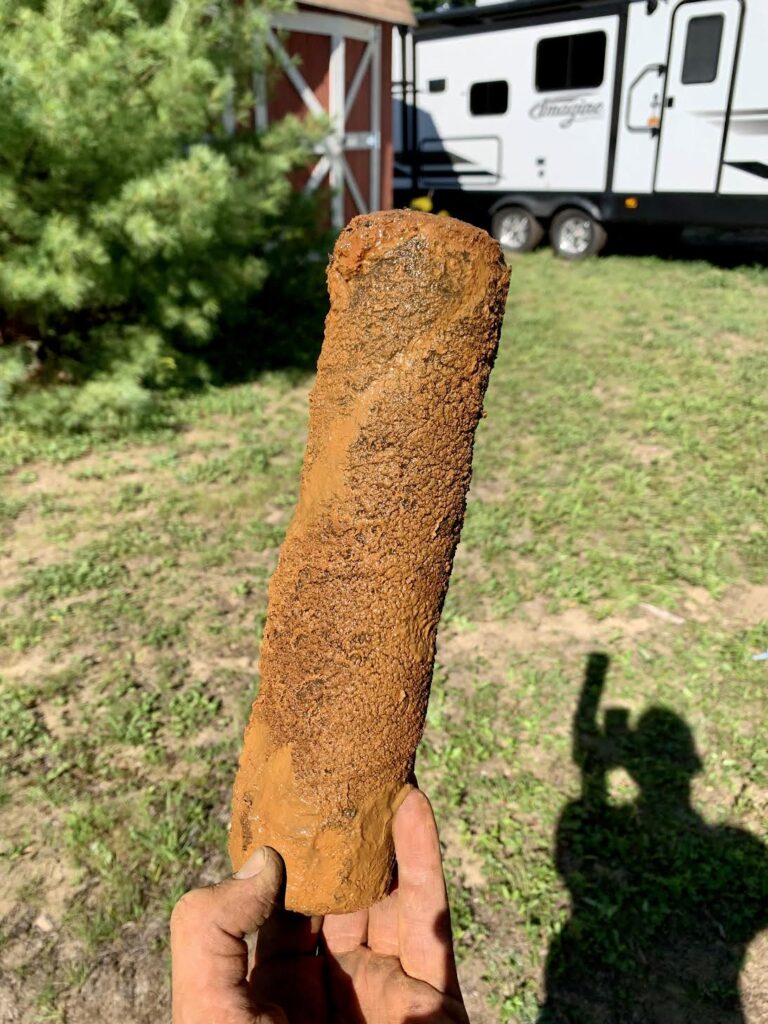
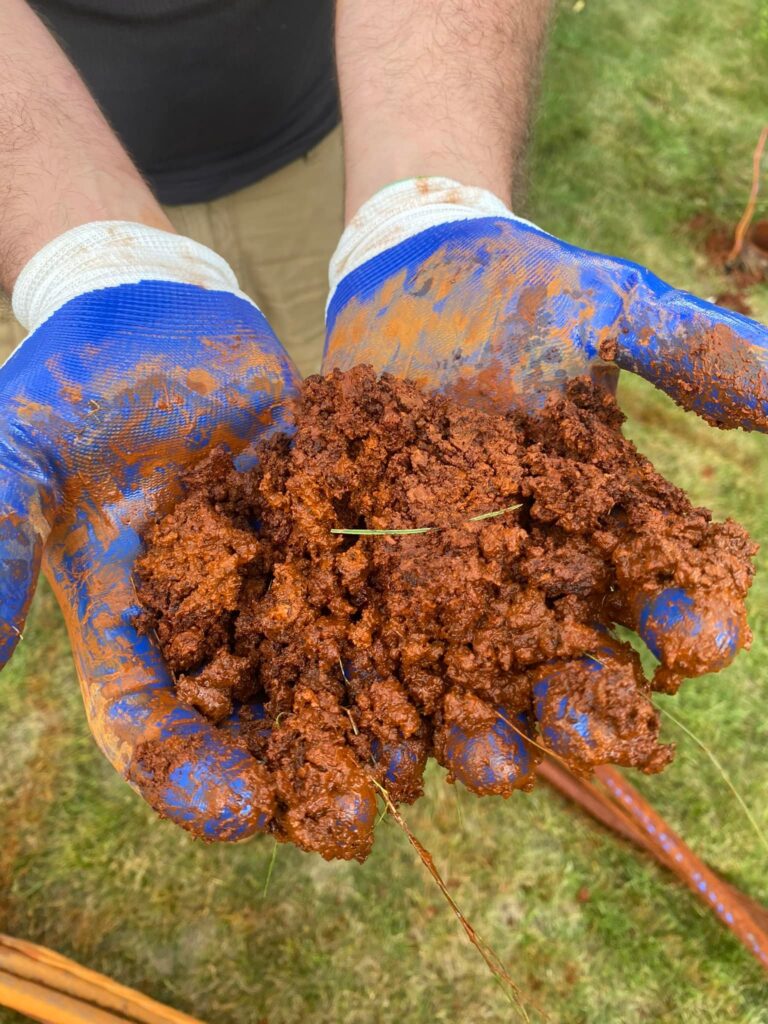

Now, iron can be present in more forms than ferrous and ferric but for the sake of this article we’re just gonna to talk about these two forms.
Solutions for iron
Filtering iron out of your well water can be a bit of a tricky process. Sometimes, it’s as simple as using a cartridge filter but most of the time we need more robust whole house systems to effectively treat iron.
Two of the most common ways to remove iron is by using an aeration system, or a water softening system. We also find that some homes with high iron levels need a combination of treatment systems because we need pretreatment or post treatment to effectively, and efficiently treat the well water. Below are some examples of iron treatment systems.
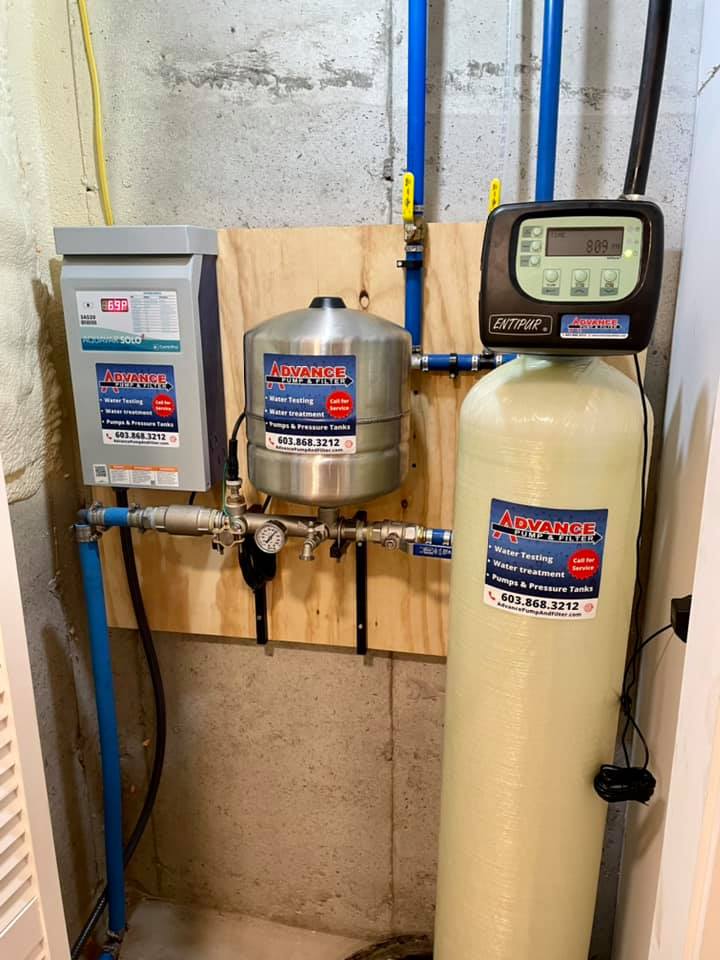

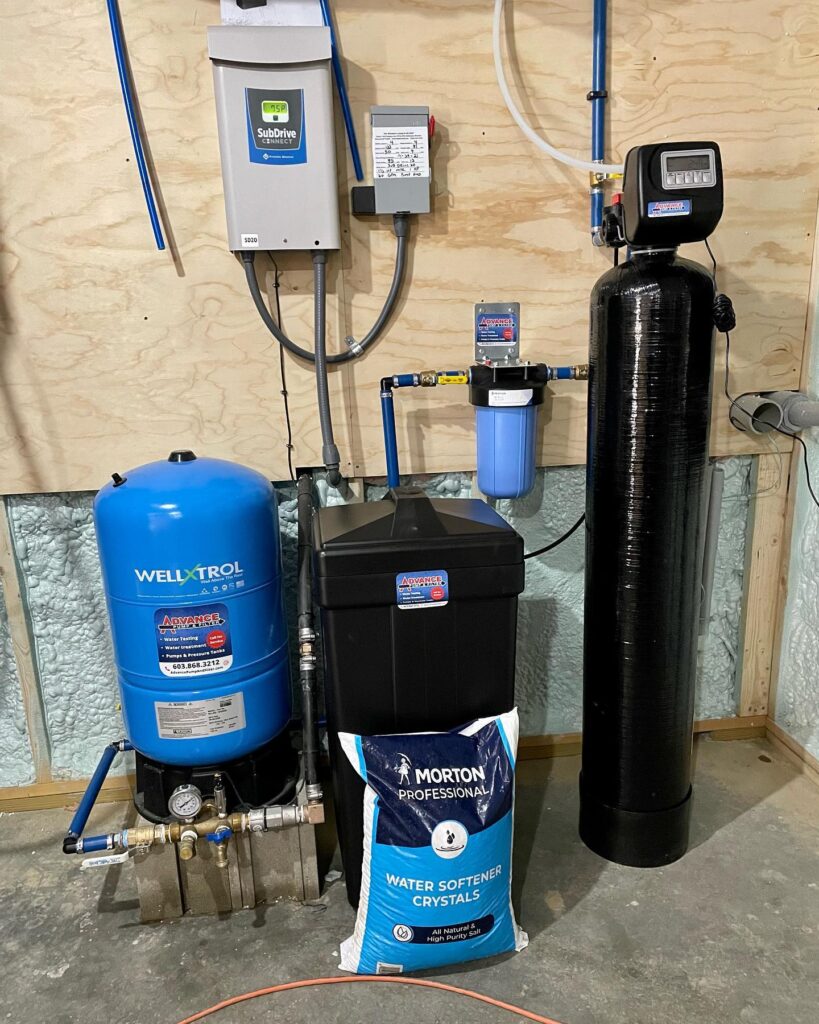
What are the 6 Benefits of removing iron from your well water?
- Better looking and tasting water
- Eliminate the risk of pipes being clogged by iron
- Protect hair from iron staining and brittleness
- Dramatically decrease the amount of cleaning for toilets, tubs, and sinks
- Softer and cleaner looking laundry
- Increase the lifespan of appliances and water fixtures
Every water source is different and may require different forms of treatment especially when dealing with iron. We always recommend having an onsite evaluation and water test. If you have any questions about iron in your water, or water treatment, please give us a call at 603-868-3212.


